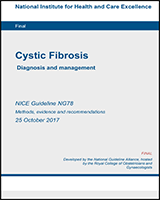From: 11, Prevention of cross infection

NCBI Bookshelf. A service of the National Library of Medicine, National Institutes of Health.
| Inpatient/outpatient care: Comparison 6. Cohort segregation versus no cohort segregation | ||||||
|---|---|---|---|---|---|---|
| Outcomes | Illustrative comparative risks* (95% CI) | Relative effect (95% CI) | No of Participants (studies) | Quality of the evidence (GRADE) | Comments | |
| Assumed risk | Corresponding risk | |||||
| Control | Cohort segregation into pathogens | |||||
| Monthly incidence of multiply resistant P aeruginosa strain Follow-up: 1 month | 206 per 1000 | 65 per 1000 (25 to 161) | OR 0.27 (0.1 to 0.74) | 119 (Hoiby & Pedersen 1989)2 | ⊕⊝⊝⊝ very low1 | |
| Annual incidence of intermittent P aeruginosa Follow-up: 1 year | 333 per 1000 | 225 per 1000 (99 to 433) | OR 0.58 (0.22 to 1.53) | Total N unclear (Frederiksen 1999) 5 | ⊕⊝⊝⊝ very low3,4 | |
| Annual incidence of chronic P aeruginosa Follow-up: 1 year | 200 per 1000 | 101 per 1000 (41 to 229) | OR 0.45 (0.17 to 1.19) | Total N unclear (Frederiksen 1999)5 | ⊕⊝⊝⊝ very low3,6 | |
| 6-month incidence B cepacia Follow-up: 6 months | 46 per 1000 | 11 per 1000 (1 to 87) | OR 0.23 (0.03 to 1.97) | 115 (Whiteford 1995)8 | ⊕⊝⊝⊝ very low4,7 | |
| Annual incidence of Burkholderia species infection (percentages) Follow-up: 1 year | 3–5% | 16.3% | Not estimable | N not reported (France)11 | ⊕⊝⊝⊝ very low9,10 | |
| Monthly prevalence of multiple resistant P aeruginosa strain (percentages) Follow-up: 1 month | 328 per 1000 | 332 per 1000 (226 to 462) | OR 1.02 (0.60 to 176) | 119 (Hoiby 1989)2 | ⊕⊝⊝⊝ very low1,4 | |
| Prevalence of AES-1 (P aeruginosa epidemic strain) Follow-up: 2 years | - | - | aRR 0.64 (0.47 to 0.87) | Total N unclear (Griffiths 2005)12 | ⊕⊝⊝⊝ very low6 | |
| Annual prevalence of chronic P aeruginosa infection Follow-up: 1 year | 722 per 1000 | 807 per 1000 (728 to 867) | OR 1.61 (1.03 to 2.51) | Total N unclear (Jones 2005)13 | ⊕⊝⊝⊝ very low6 | |
| Annual prevalence of transmissible P aeruginosa infection Follow-up: 1 year | 130 per 1000 | 154 per 1000 (96 to 237) | OR 1.22 (0.71 to 2.08) | Total N unclear (Jones 2005) 13 | ⊕⊝⊝⊝ very low4 | |
| Annual prevalence of chronic infection with transmissible P aeruginosa strain (percentages) Follow-up: 1 year | 13% | 15.4% | Not estimable | Total N unclear (Jones 2005)13 | ⊕⊝⊝⊝ very low10 | |
The basis for the assumed risk (e.g. the median control group risk across studies) is provided in footnotes. The corresponding risk (and its 95% confidence interval) is based on the assumed risk in the comparison group and the relative effect of the intervention (and its 95% CI).
Abbreviations: adjRR: adjusted risk ratio; ASUSP-1: Australian epidemic strain, type 1; CI: confidence interval; MRSA: methicillin-resistant S aureus; OR: odds ratio
The quality of the evidence was downgraded by 1 because of high risk of bias in relation to comparability of the groups, and outcome reporting
Intervention group: data from May 1983; comparison group: data from March 1983. Intervention implemented in April 1983.
The quality of the evidence was downgraded by 1 because of high risk of bias in relation to comparability between groups, and outcome assessment
The quality of the evidence was downgraded by 2 because the 95% CI crossed 2 default MIDs
Intervention group: data from 1982; comparison group: data from 1980. Intervention implemented in 1981
The quality of the evidence was downgraded by 1 because the 95% CI crossed 1 default MID
The quality of the evidence was downgraded by 2 because of high risk of bias in relation to the comparability between groups, outcome assessment and unclear sample selection
Intervention group: data from December 1992; comparison group: data from May 1992. Intervention implemented in June 1992.
The quality of the evidence was downgraded by 2 because of high risk of bias in relation to sample selection, comparability between groups and outcome assessment
Imprecision cannot be calculated with the data reported
Intervention group: data from 1992; comparison group: data from 1983–1990. Intervention implemented in November 1991. Intervention was incomplete cohort segregation.
Intervention group: data from 2002; comparison group: data from 1999. Intervention implemented in January 2000.
Intervention group: data from 2001; comparison group: data from 1999. Intervention implemented in 2000.
From: 11, Prevention of cross infection

NCBI Bookshelf. A service of the National Library of Medicine, National Institutes of Health.